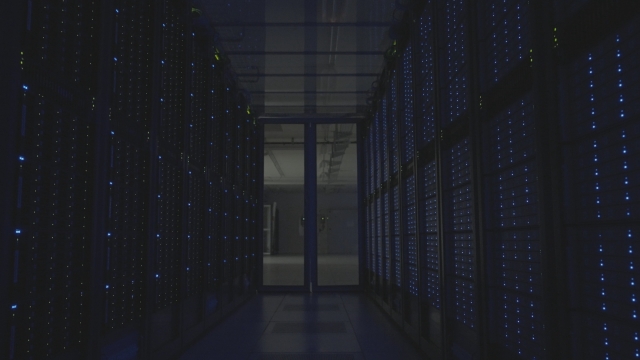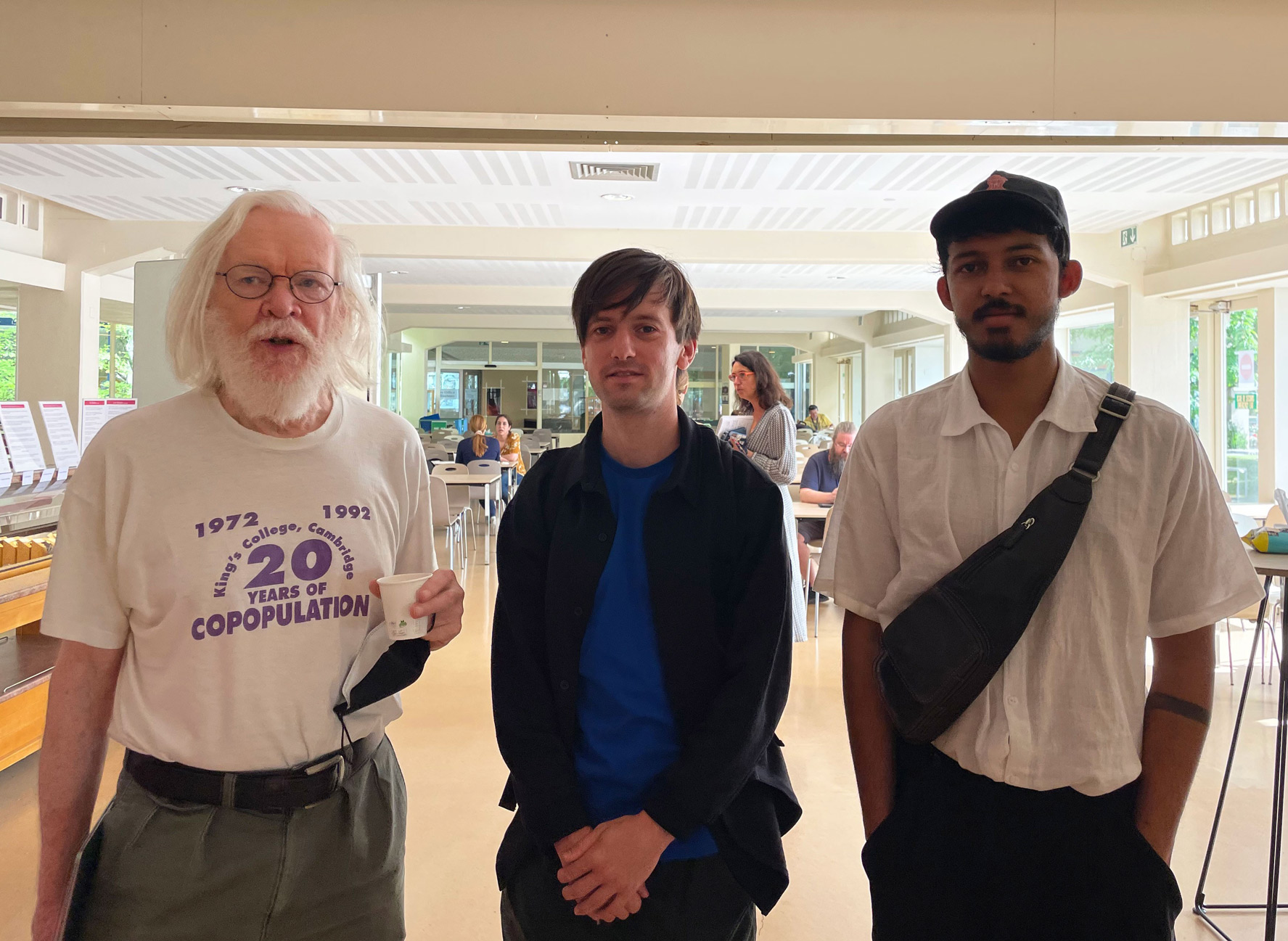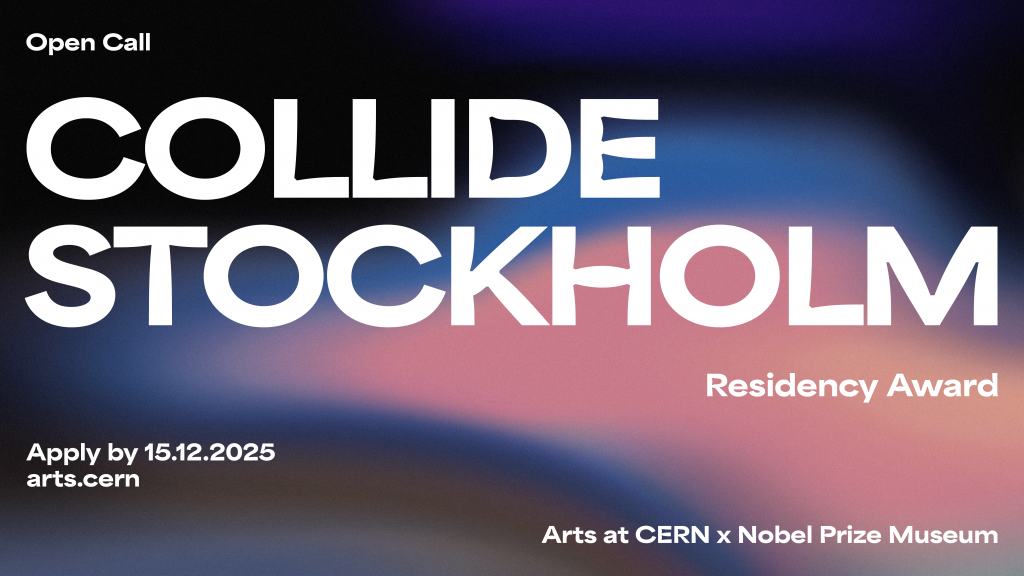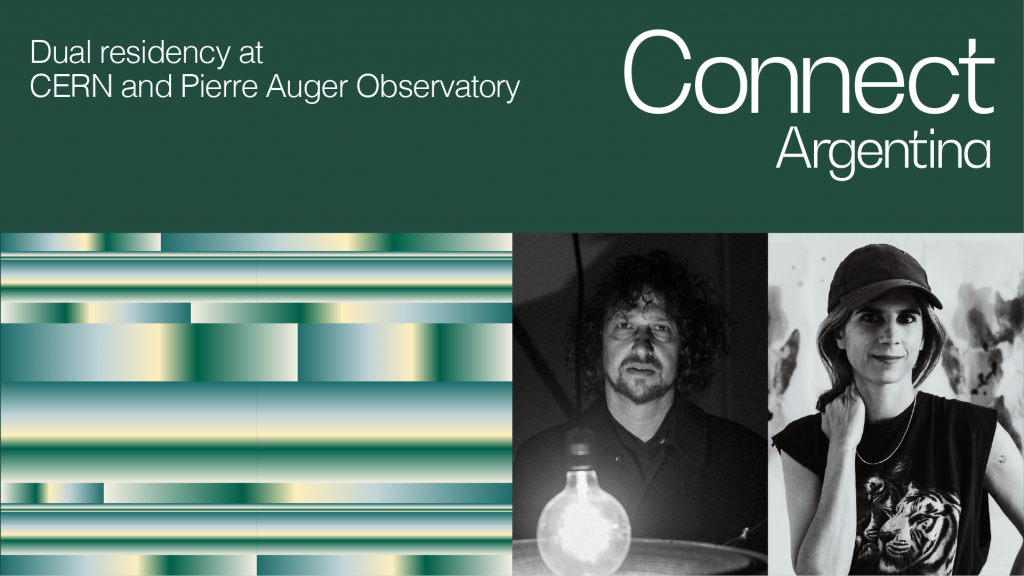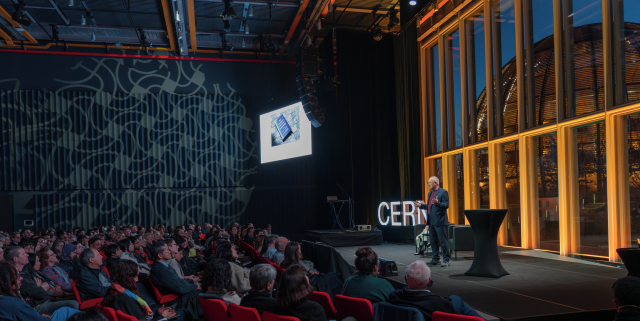- Tags
- Artistic residencies, Connect
- Author
- Ana Prendes

As the Swiss artist concluded his second stay at CERN, we delve into his first feature film, his immersion in the Laboratory’s community and his interests in machine learning and the material infrastructures of our digital world
Following his first residency in early 2022, Swiss artist Ian Purnell returned to the Laboratory for a second research and exploratory stay. Purnell is one of the selected artists for Connect South Africa alongside Kamil Hassim. The dual residency marked the inauguration of Connect, the collaboration framework between Arts at CERN and the Swiss Arts Council Pro Helvetia that fosters dialogue between artistic and scientific communities worldwide.
With a background in documentary filmmaking, Purnell’s practice uses cinema tools and cinematographic space to explore the visual narratives humans create, such as scientific imagery, to make sense of the world and the universe. His work often blurs the lines between fiction and reality, experimenting with performative elements, archive material, and actual footage to explore the limits of human perception.
This curiosity drew Purnell to improvisational theatre sessions held for the scientific community during his stay. ‘I just went to observe, but I was part of the group activities within minutes’, he said about his session attendance. ‘I was interested in how scientists choose theatre to look for ways to talk about their work and how it provided an opportunity to find performativity in everyday situations within a scientific context, working with an existing narrative rather than imposing ones’.

Purnell’s first feature film, partly shot at the Data Centre
Purnell’s current project, his first feature film, explores the Internet’s physical infrastructure and how we perceive it. In 2022, he spent three weeks on a ship documenting the construction of broadband infrastructure in a remote part of Alaska, US, exposing the manual labour and unseen depths that power our digital world. The film aims to give a glimpse into the hidden physical backbone of the Internet, offering a fresh perspective on what usually remains invisible. In connection with this work, Purnell returned to CERN to shoot at the Data Centre, the heart of the Laboratory’s scientific and computing infrastructure.
The tangibility of the Data Centre is a central part of the digital ecosystem, yet it’s hard to sense
The artist also engaged with scientists who witnessed the birth and development of the World Wide Web. Invented by Tim Berners-Lee at CERN in 1989, the Web was conceived to meet the need for automated information sharing between scientists worldwide. The first website at CERN—and in the world—was dedicated to the World Wide Web project itself, and it was restored in 2013 for public access.

Immersing in the Laboratory’s community
During his second stay, Purnell had the opportunity to resume conversations with physicists and engineers he had previously engaged with, as well as having time for some new first encounters. ‘With a renewed sense of curiosity and a fresh perspective, I was able to delve deeper into the inner workings of CERN by revisiting key locations and reconnecting with scientists I had previously met. Each encounter was a chance to fully immerse me in the experience and gain a deeper understanding of the work being done.’
Purnell engaged in several conversations with electronics engineer Maria Elena Angoletta, discussing CERN’s research on machine learning and human-machine interactions. ‘Our discussion started with machine learning at CERN but evolved into conversations about human learning and life lessons, driven by Ian’s questions,’ Angoletta described. The scientist, who has recently taken part in Suzanne Treister’s project Scientific Dreaming, regularly engages in Arts at CERN programmes, ‘Talking with artists helps us remember the broader perspective and fuels our creativity. Creativity and lateral thinking are greatly needed in our work at CERN, where we often have to step away from well-worn paths and create new ones.’
Talking with artists helps us remember the broader perspective and fuels our creativity
In ongoing conversations with Angoletta and during his upcoming visit to the South African Radio Astronomy Observatory, Purnell is exploring machine learning developments in anomaly detection through unsupervised learning and the potential of these systems for image construction.

Exploring CERN’s complex technological infrastructure
In addition to his visits to the Data Centre, Purnell revisited several laboratory facilities to dive deeper into CERN’s scientific research. He visited the Gas Electron Multiplier (GEM) Laboratory, where physicists assemble new muon detector technology for the CMS Experiment. ‘It was fascinating to witness and film the meticulous work that goes into putting all these pieces together. The unpredictability of the outcome, where a small error can be challenging to detect, made it feel like a living organism. I felt like I was a part of the process, not just an observer.’
Purnell also visited the Linear Electron Accelerator for Research (CLEAR) facilities at CERN to learn about the research and development of accelerator technology. Guided by physicist Pierre Korysko and Lead of Operations Wilfrid Farabolini, he explored how high-energy electron beams are used in FLASH radiotherapy. This cancer treatment delivers highly energetic particles to tissues almost instantaneously.

Additionally, Purnell toured the ISOLDE Facility with Technical Coordinator Joachim Vollaire, the Antimatter Factory with applied physicist Gunn Khatri, and the ATLAS control room with experimental physicist Despina Sampsonidou. These visits provided a deeper understanding of the complex and rewarding work driving fundamental science.
This year, Purnell plans to finish filming his feature, set to be released in 2024, and to revisit South Africa to film more at the astronomy observatories. ‘There are many threads from the residencies that I want to dive deeper into. I’m developing a few projects, but these experiences have profoundly impacted my artistic practice,’ Purnell said. As he continues to distill the information and inspiration he has gathered, Purnell remains in touch with the scientists he met, aiming for closer collaborations during his next stay at CERN.
